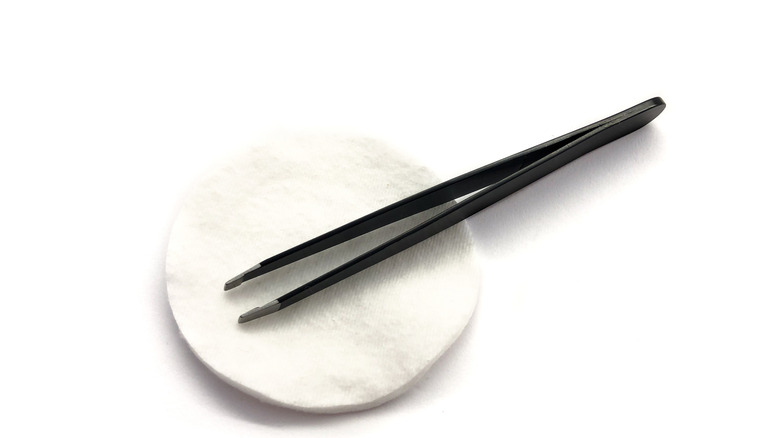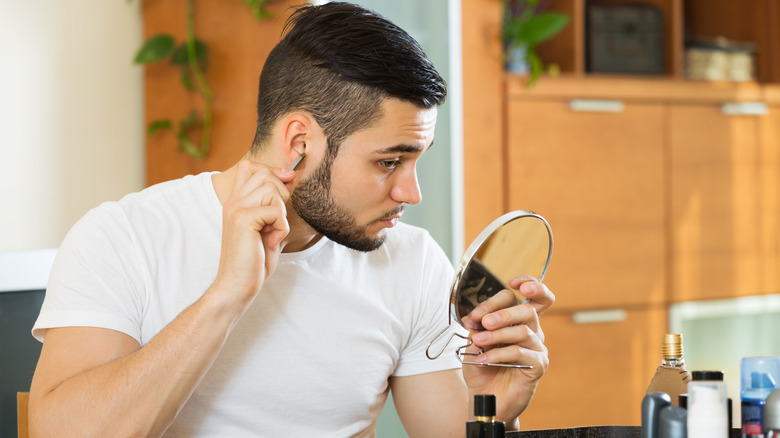Why Plucking Your Ear Hair Is Riskier Than You Think
Think up almost any grandpa from a cartoon and he's probably going to have the same character design as any other you can name. Graying hair, rumpled clothing, and, of course, ear hair. The graying hair and rumpled clothes don't always translate to real life. But the ear hair is almost a certainty. And it's not just limited to older men though they often have the most obvious ear hair.
WebMD says that researchers once thought hairy ears were passed down the male line through the Y chromosome. Studies have since debunked this theory and researchers now speculate that ear hair gets coarser and thicker as men age and their hair grays. This causes the hair to become more noticeable, turning into the stereotype we see in cartoons.
It's a stereotype that has people searching up ways to remove the hair despite the utility it has to offer. Both ear hair and earwax help keep dirt and grit out of our ear canals and away from our eardrums. It's still considered unwanted, though. And the most common way of getting rid of it is through plucking. But there is pretty serious danger involved that a lot of people overlook.
Eardrum dangers
When discussing the best methods of ear hair removal, Men's Health mentions plucking first. It's the most accessible, after all, with only a pair of tweezers needed. But Men's Health also states that you should only use blunt tweezers if you attempt to pluck your ear hairs. They say this is because it's easier to work with blunt tweezers and you're less likely to scratch your ear canal.
But there is a good reason you might want to skip the tweezers entirely. Cape Cod Health interviewed Craig Jones, M.D. He is an otolaryngologist, otherwise known as an "ear, nose, and throat" doctor. And he insists that nothing should go in your ear canal. Even cotton swabs can cause serious damage, up to and including rupturing the eardrum.
Dr. Jones isn't alone in this. Ear doctors all over advise people to avoid using cotton swabs on their ear canals. It's even on most product packaging. But people still do it. According to a CBS report in 2017, an average of 12,500 children per year were seen at ERs for cotton swab-related injuries between the years of 1990 and 2010, totaling around 263,000 children.
If cotton swabs can do that kind of damage, imagine what metal tweezers can do. Those who still want to pluck their ear hair should take Dr. Jones' advice and only go after those in the outer ear, the area you can easily see. It's safer for your hearing and overall ear health.


